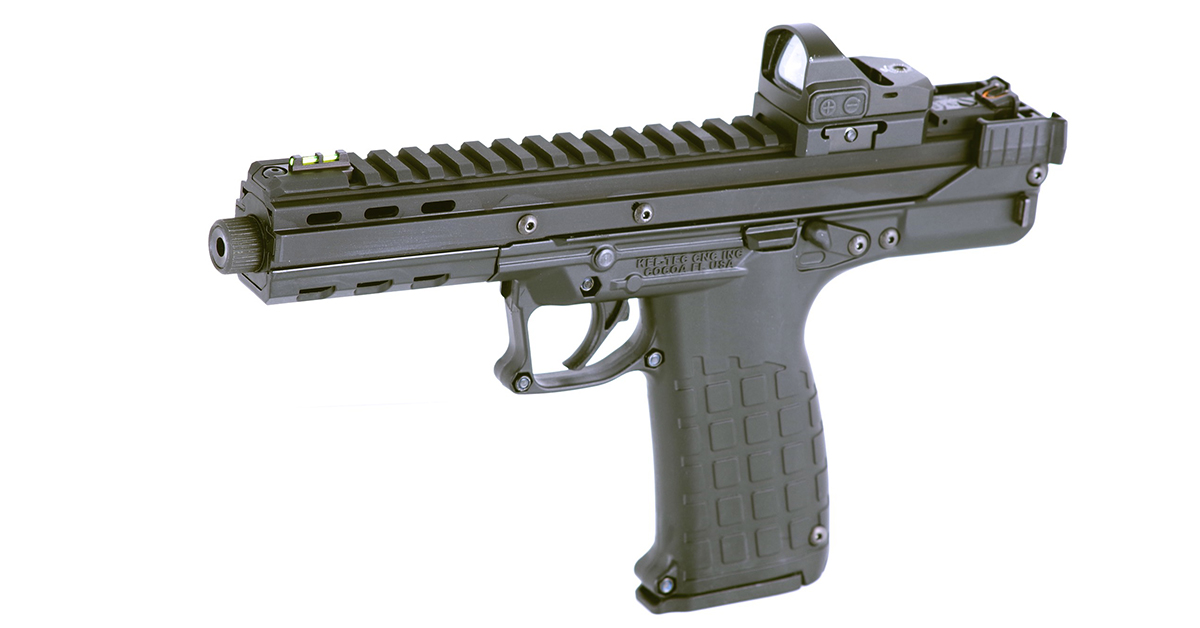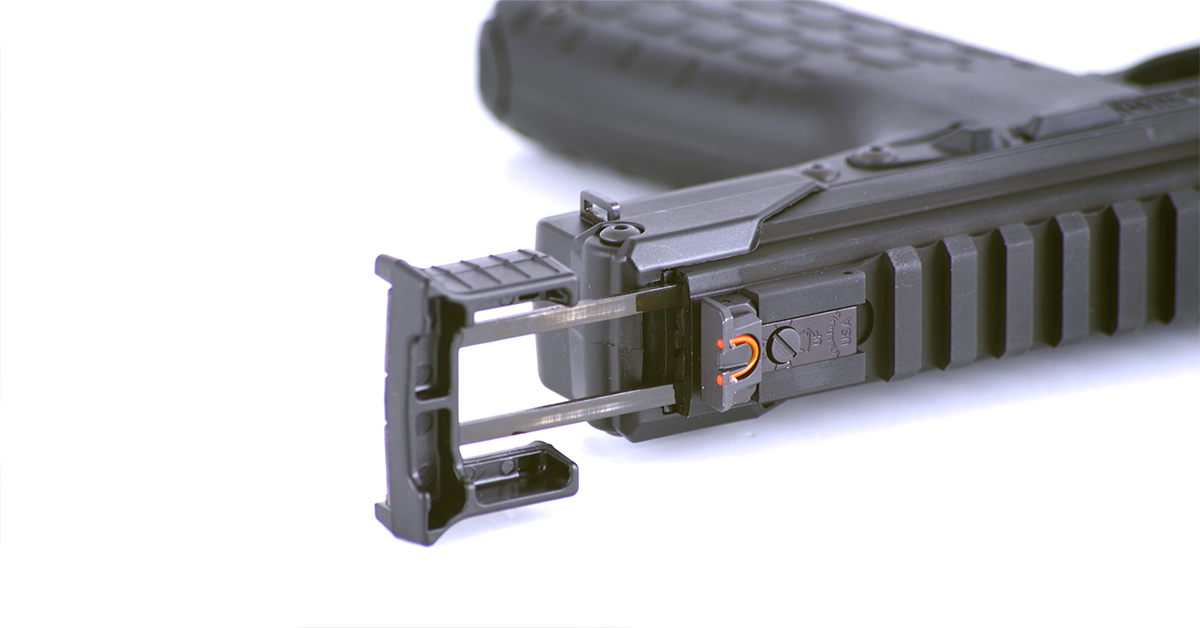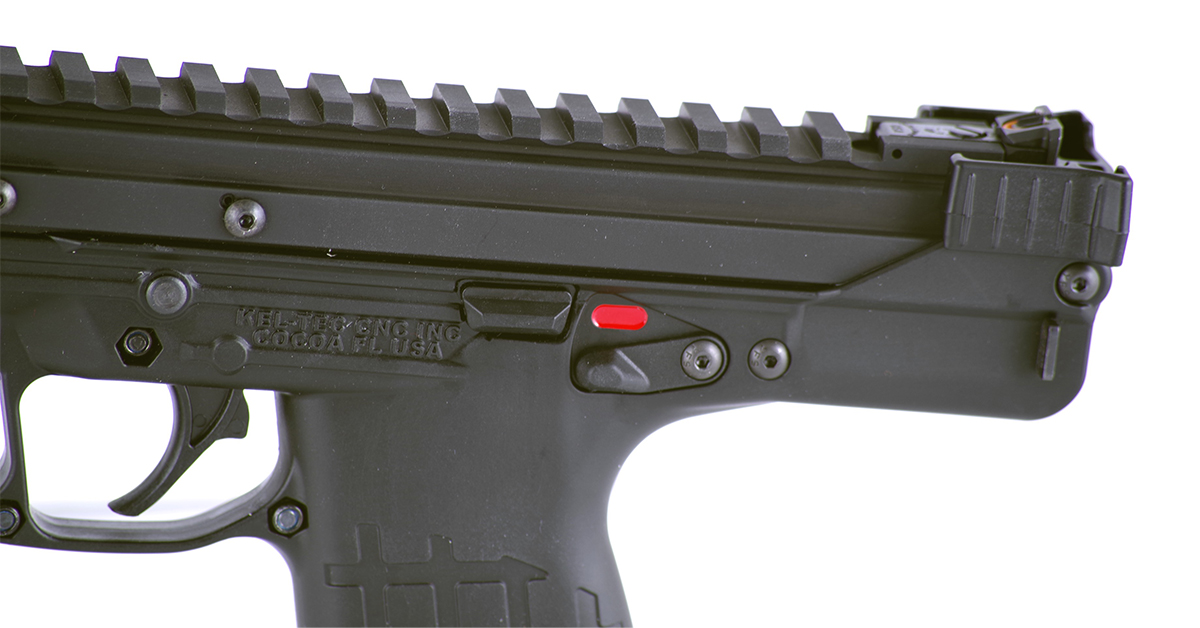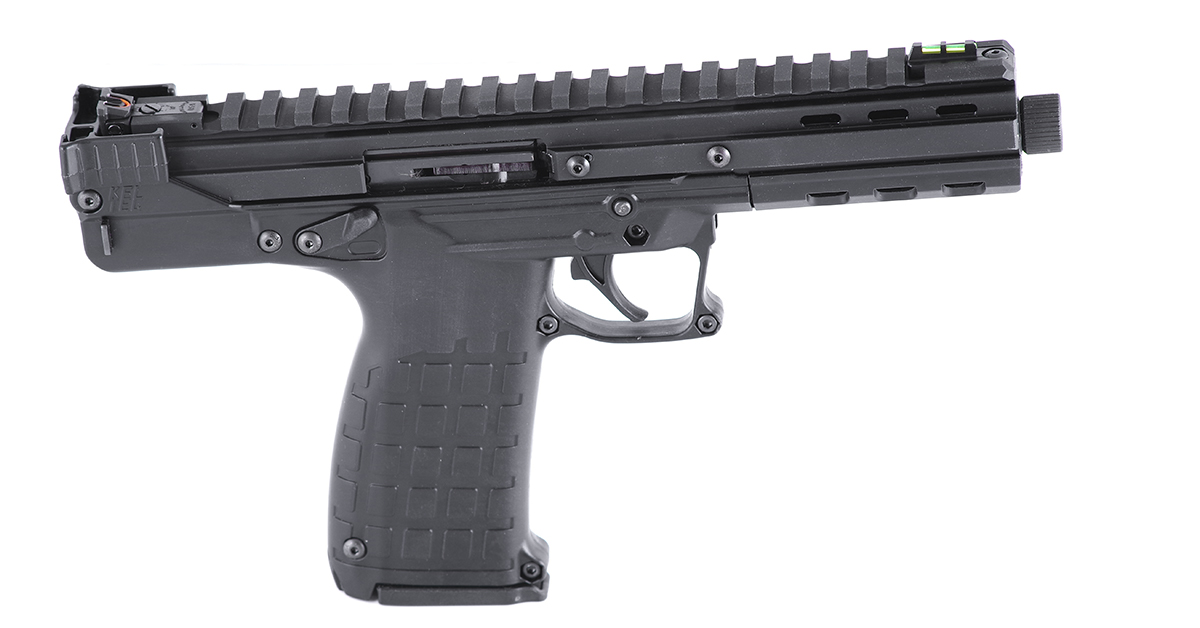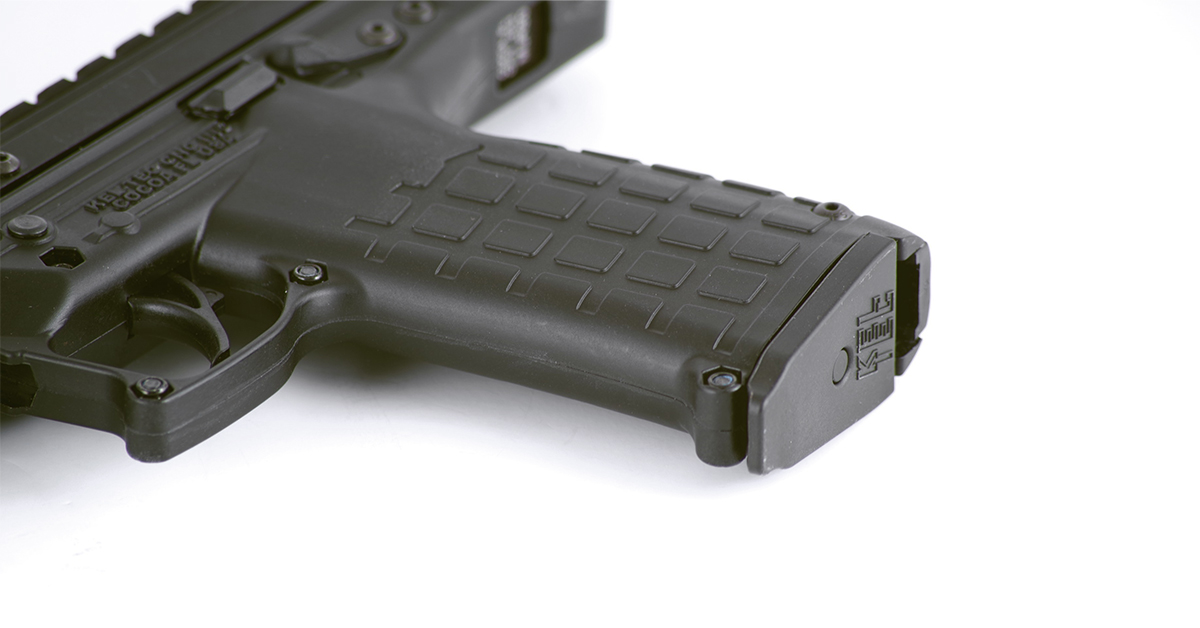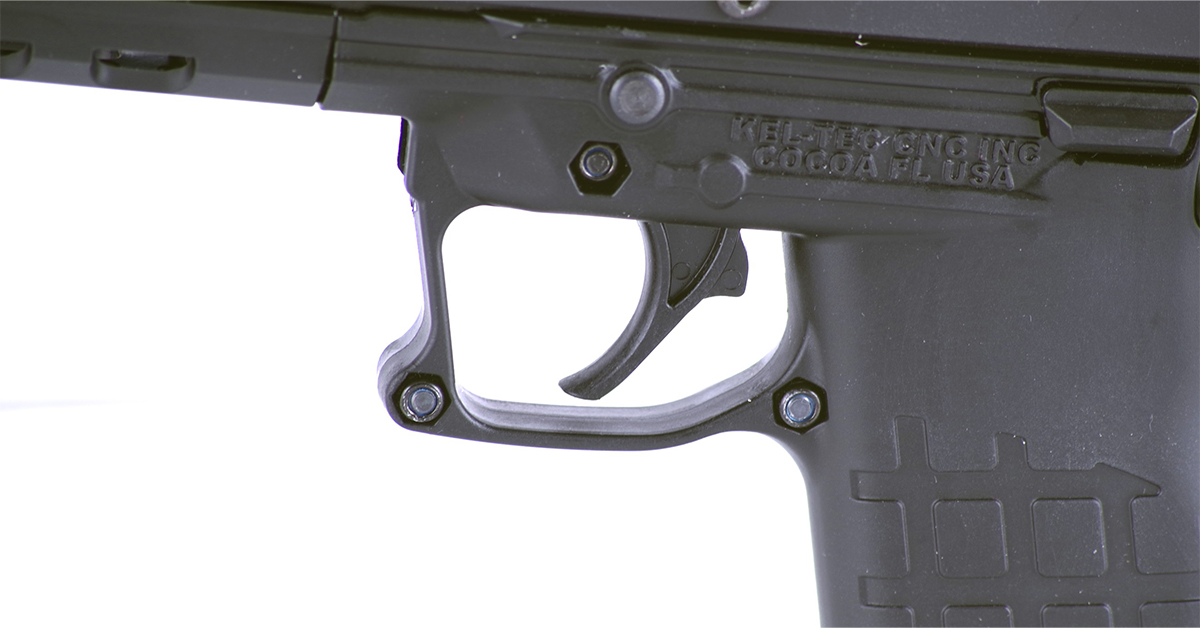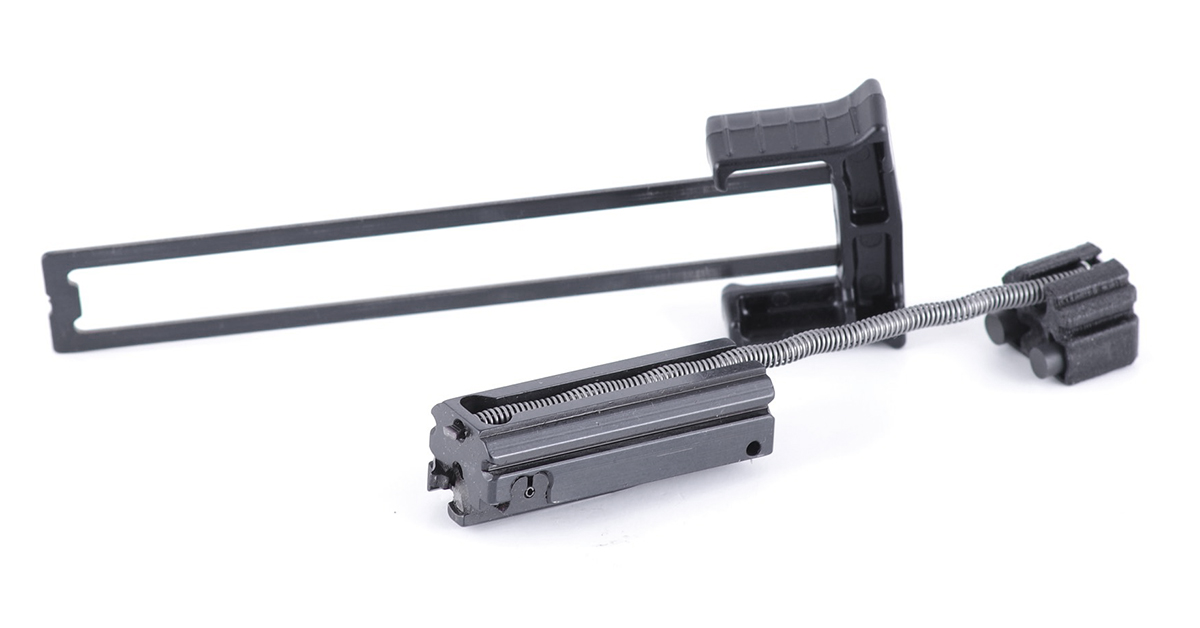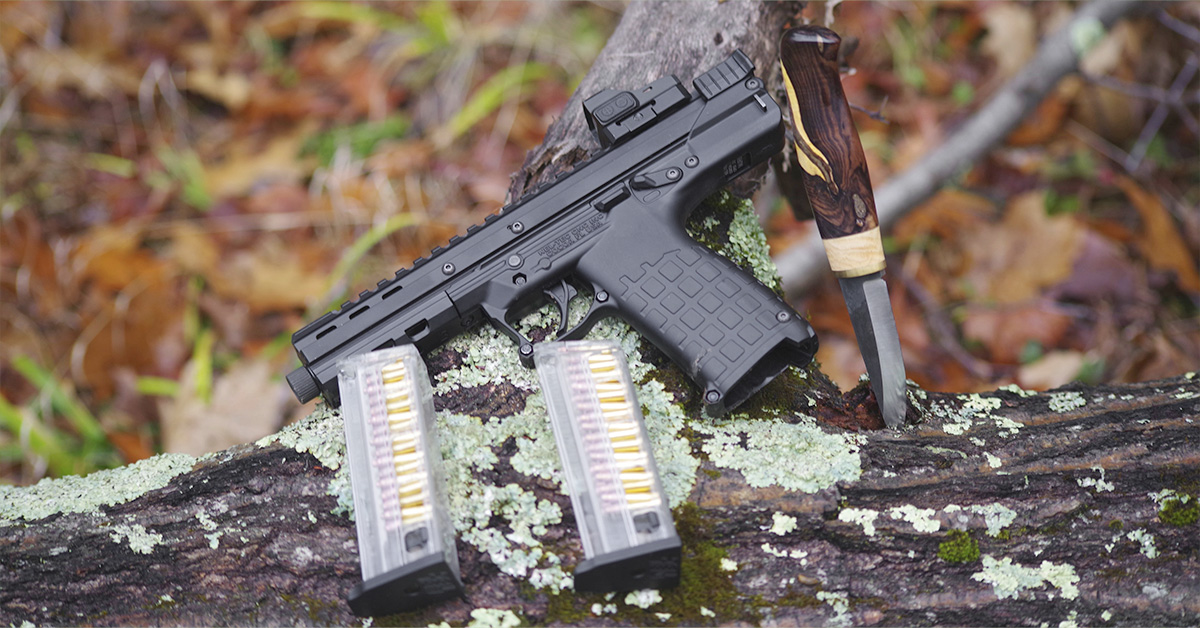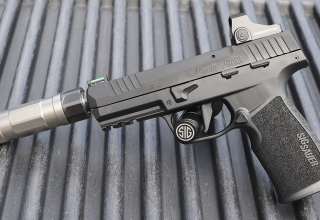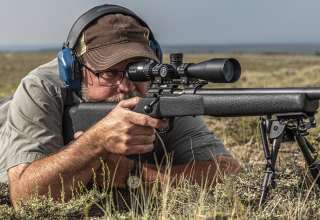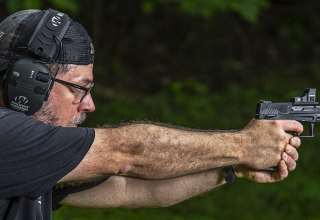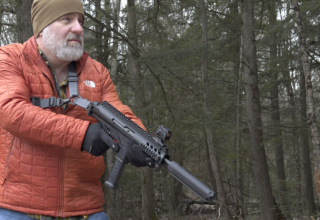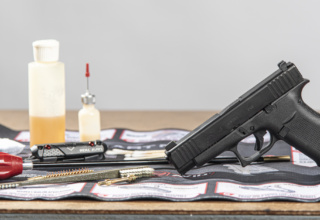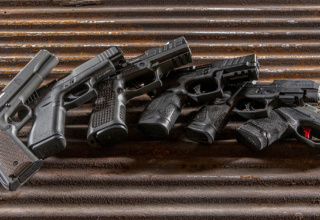Kel-Tec thinks outside of the box with this .22 rimfire pistol with a 33 round magazine capacity
by Robb Manning
In the gun industry, when a company or individual designs a firearm that becomes successful, there’s bound to be many imitators. And many more. And even more than that. Eventually, most firearms are all a variant of the same basic designs. So, I really appreciate it when companies think outside the box and design products that aren’t like anything else on the market. Few gun companies think outside the box. Kel-Tec, led by founder and gun designer George Kellgren, doesn’t hesitate to wander off the reservation.
When Kel-Tec released the CP33 — CP for Competition Pistol, 33 for magazine capacity — I was immediately drawn to it based purely on looks and design, and knew I had to get my hands on one. I heard many comments about futuristic and space-age aesthetics. Yeah…but only if that’s the 1960’s version of futuristic and space-age.
Aesthetically, the CP33 appeals to me. It’s not unlike an UZI-type submachine gun in appearance. It hints at a little bit of naughtiness, whispering seductively in my ear, “I should be a full-auto.” I’m not going to lie, the appeal of a full-auto .22 has always enticed me, and heaven knows, right now, a full-auto in .22 caliber is the only caliber I’d be able to afford to shoot given the price of ammo. I digress.
For many guns, people talk about “sleek lines” and “elegant curves.” Those aren’t descriptors I would use for the CP33. No-nonsense is more accurate. I’d also say it looks industrial, thanks mostly to the 13 visible screws and nuts that hold the CP33 together.
Ergonomics/Controls
Ergonomics isn’t the CP33’s strong suit. The pistol grip has a narrow palm swell, and that’s pretty much it for ergonomics. The grip is big, and long, and overall not that comfortable to hold. Fortunately, it’s only a .22 with almost no recoil to manage, so it’s not a huge factor.
The ambidextrous thumb safety is engaged in the up position and disengages when switched down. It’s a little difficult to manipulate, especially with gloves on. It’s too small and lacks texture. Plus, it’s too close to the more pronounced slide catch, which gets in the way when trying to operate the safety. Due to this, I had to break my grip to disengage and engage the safety, and I soon found it was much easier and faster to just use my off-hand to work it.
It doesn’t have a slide like a traditional handgun, so rounds are chambered via a charging handle, much like an AR-15. Some people don’t care for this, but I like it. The charging handle, though, is the one area of the gun where the fit and finish are a bit lacking: the injection molding marks are visible from the top and are so unsightly that, at first, I thought the charging handle was installed upside down. The underside looks better.
The trigger is outstanding. It averaged 2.7 lbs. out of 10 pulls using my Timney Triggers trigger tension scale. It is smooth with a clean, crisp break and a short reset. People pay good money to buy and install a trigger like this on other guns, but the CP33 comes with it, no up-charge.
The biggest gripe for people is going to be the magazine release. It’s situated at the heel of the grip, European-style, and you know how us Yanks feel about European-style mag releases. It does take some getting used to, but it’s mostly a non-factor for a couple of reasons. First, the magazines do not drop free, and are in the mag well pretty tight. You’re going to need to use your off-hand to grab the magazine and remove it from the grip anyway, so it is not a stretch to use your thumb to hit the release while doing so. Second, this gun is built for plinking and target shooting, not self-defense. Thus, having split-second mag reloads isn’t necessary. Additionally, with the 33-round magazine capacity, you will do far fewer reloads, which will save time. Just think…if you do one mag reload with the CP33 and then shoot through the second magazine, with other .22 pistols you would have had to do seven mag reloads to get that same number of rounds.
Features
The CP33 ships with adjustable fiber-optic sights that are more than suitable for good accuracy. Each fiber-optic (front and rear) is encased in the metal sight and looks to be rugged. The sight radius is a whopping 8.5 inches, which contributes a lot to the great accuracy.
If iron sights aren’t your thing, an aluminum Picatinny top rail runs the length of the upper assembly should you want to mount an optic. Also, the dust cover has a built-in M-LOK slot for mounting a light, laser, or any other accessory that brings you joy.
The barrel is fixed, 5.5 inches long, and has a 1 in 14-inch twist rate. It’s threaded (1/2-28 TPI) for mounting a suppressor or other muzzle device such as a compensator. I’m a big fan of suppressors, especially for .22s, and the CP33 is an excellent host. I mounted a Ruger Silent-SR .22 rimfire suppressor, and it shoots very quiet. I didn’t have any performance issues. There were no malfunctions of any kind to report, and out of three magazines, I didn’t get any gas or gunpowder blowback.
The Magazine
When I first heard the CP33 had a 33 round magazine capacity, I felt like the prayers of many gun enthusiasts had been answered. I’m baffled as to why almost all manufacturers stick to 10-round magazines for their .22 handguns.
The magazine is split into two halves by a metal rod that runs down the center. It is kind of like two magazines that feed into one. The magazine spring wraps around the rod so there’s only one spring for the two halves. A hole in the follower allows it to progress down the rod as the magazine is loaded. It is a simple, yet ingenious, approach. Kel-Tec isn’t trying to harness 33 rounds of .22, they’re corralling two 16 round sections that feed into one (hence the 33rd round).
The 33-round capacity in one CP33 magazine is glorious. It feels like it shoots all day and all night compared to the 10-round capacity of everything else I’ve shot. And because this is America and we like icing on our cake, Kel-Tec also sells a +17 magazine extension to bring the total capacity to 50 rounds. That’s right, 50 rounds. In one magazine. That’s crazy talk.
What’s also crazy talk, unfortunately, is that each 33-round magazine is listed for $50 on the Kel-Tec website, and the +17 round extension goes for $30. I understand that a lot of R&D went into developing this magazine, and patents aren’t cheap, either, but $80 for a 50-round magazine is a little bit crazy. Another hidden cost to factor in is that Kel-Tec warns against using bulk pack ammo — which is cheaper to shoot — because it won’t feed correctly from the magazine. They recommend only high quality, high velocity ammo with bullet weights of 40 grains or heavier.
Loading the magazine requires a very specific procedure and can be tricky. Each round that you load into the magazine must have the rim in front of the previous round, so that it cascades. If each rim doesn’t cascade correctly, Kel-Tec calls this rim-lock, and it will cause a malfunction. From my experience, Kel-Tec is correct in saying this will cause a malfunction, as compared to saying this might cause a malfunction. Every round that I found to be improperly seated caused a malfunction 100 percent of the time. So, pay attention as you load each round, because the last thing you want to do is finish loading, then see an improperly seated round two-thirds of the way down the left half of the magazine.
The first couple of times I loaded the magazines, they were incredibly hard to load. As you load the magazine, you might be tempted to press down on a little notch located on the magazine follower to relieve spring tension for easier loading. Resist this temptation. Without spring tension, it’s pretty much impossible to maintain the proper case rim cascade. This technique led to many problems the first time I took it to the range. Kel-Tec recommends loading only 20 to 25 rounds the first 10-15 times to break it in. I’d go further and recommend leaving the magazine loaded between uses until it breaks in or use a screwdriver to press the follower all the way to the floor plate, then push a second screwdriver through the side cut outs, wedging the follower to the bottom. After about the fourth or fifth time loading, it did become far easier to load a full magazine.
Performance
The CP33 is an extremely smooth shooter. Recoil can hardly be felt. It is like shooting a CO2 BB pistol. The position of the grip in relation to the receiver — roughly one-third of the receiver is behind the center-line of the grip — makes for incredibly balanced handling. In fact, the CP33 can be set upright on its grip on a desk, magazine inserted, and it stays perfectly upright. Balance is something that shooters factor into rifle shooting, but not really with pistol shooting. You definitely notice it with the CP33.
The answer to the question of reliability is “complicated.” I’ve never read handgun owner’s manuals unless I have an issue or want to seek specific information. It is almost imperative to read the CP33 manual, though — in particular the magazine loading section. I’m hard-headed, so the first time I took the CP33 to the range for some plinking, I ignored most of the warnings. It was a dumpster-fire, I’m not going to lie. But when I returned to the range to test it for this review, I adhered to the warnings — proper loading, not using bulk ammo, using 40-plus grain bullets, et cetera — and had almost no issues.
So, yes, if you follow the warnings, the CP33 is reliable. But this also puts it in the category of being kind of ammo finicky. I have a hard time calling something reliable if it is finicky.
See what I mean? It’s “complicated.”
Out of curiosity, I did go back and shoot some bulk ammo. I didn’t include this with accuracy or velocity testing, but I fired some bulk Winchester Super-X Power-Point, which uses a 40-grain copper plated hollow point bullet. I loaded a full 33-round magazine with it and fired it. I had zero issues with it. It fed as smooth as butter. So, I loaded up another magazine. Same thing. I loaded up a third magazine. Again, no issues. I fired exactly 99 rounds of bulk ammo with zero malfunctions to report.
Of the issues I had during testing, there were instances where I had problems chambering the first round. It happened fairly frequently, and usually involved the round not going cleanly into the chamber. On five occasions, I had to remove the magazine because it was going to double feed; however, aside from the first-round-chambering issue, I only had one other issue the entire day during the course of firing — a strike on the primer that didn’t ignite. In general, I found that the more I fired the CP33, the better it performed.
Accuracy is very good, thanks in part to the long sight radius and the fixed barrel. I used the fiber-optic sights that it came with. All seven loads together averaged groups of 1.49 inches at 12 yards. It really liked the CCI Velocitor 40-grain hollow point, which had a 0.69-inch group. The least accurate load of the day was the Aguila Interceptor 40-grain copper plated solid, which had a 2.34-inch group.
In Sum
The first time I fired the CP33, I took it plinking with some friends and it didn’t perform as I expected it to. Most of the fault was mine for not loading it properly and using cheap bulk ammo, but I left the range feeling like it wasn’t worth the hassle if it was going to be that finicky with ammo and loading. It was very disappointing, and I even contemplated sending it back without doing a review. The second time I took it to the range, though, I had almost the exact opposite experience, and the CP33 completely won me over. It was reliable, it was accurate, and most of all, it was tons of fun. I went from “ready to send it back,” to “I gotta buy this” within that second trip to the range. And I did end up buying it. So, if I could make one recommendation, give it about 100-200 rounds to break in, and that’s when the fun starts.
Performance Data
Ammo; Average Velocity, E.S.; S.D., Accuracy
- Aguila Interceptor 40-gr. CP Solid; 1131.0; 254.5; 95.8; 2.34
- American Eagle 40-gr. Solid; 1002.5; 63.0; 24.6; 1.12
- Blazer 40-gr. Solid; 1025.2; 60.9; 26.5; 1.62
- Browning 40-gr. BPR HP; 1088.5; 106.2; 48.0; 1.88
- CCI Mini-Mag 40-gr. CP RN; 1097.5; 183.9; 77.2; 1.7
- CCI Velocitor 40-gr. CP HP; 1106.8; 251.2; 95.2; 0.69
- Federal Champion 40-gr. Solid; 1037.5; 43.6; 19.3; 1.11
Accuracy is in inches and consists of a five shot group fired from a rest at 12 yards. Velocity is an average of five shots measured in Feet Per Second (FPS). E.S. is Extreme Spread. S.D. is Standard Deviation. CP is Copper Plated, RN is Round Nose, HP is Hollow Point, BPR is Browning Performance Rimfire.
Kel-Tec CP33 Specifications
- Caliber: .22 LR
- Magazine Capacity: 33 rounds
- Action Type: semi-auto, hammer-fired
- Frame Composition: black polymer
- Slide Composition: aluminum
- Barrel: fixed, 1:14 twist, threaded 1/2-28 TPI
- Sights: steel, adjustable, fiber-optic 3-dot
- Barrel Length: 5.5 inches
- Height: 6.0 inches
- Width: 1.7 inches
- Overall Length: 10.6 inches
- Weight: 25.5 oz. (with unloaded magazine)
- Accessories: includes two (2) 33-round magazines
- MSRP: $550
- TESTED: Beretta PMXs 9mm Pistol - July 26, 2024
- The Correct Way to Clean a GLOCK - January 15, 2024
- Concealed Carry Guns: How Important is Ergonomics? - December 11, 2023

